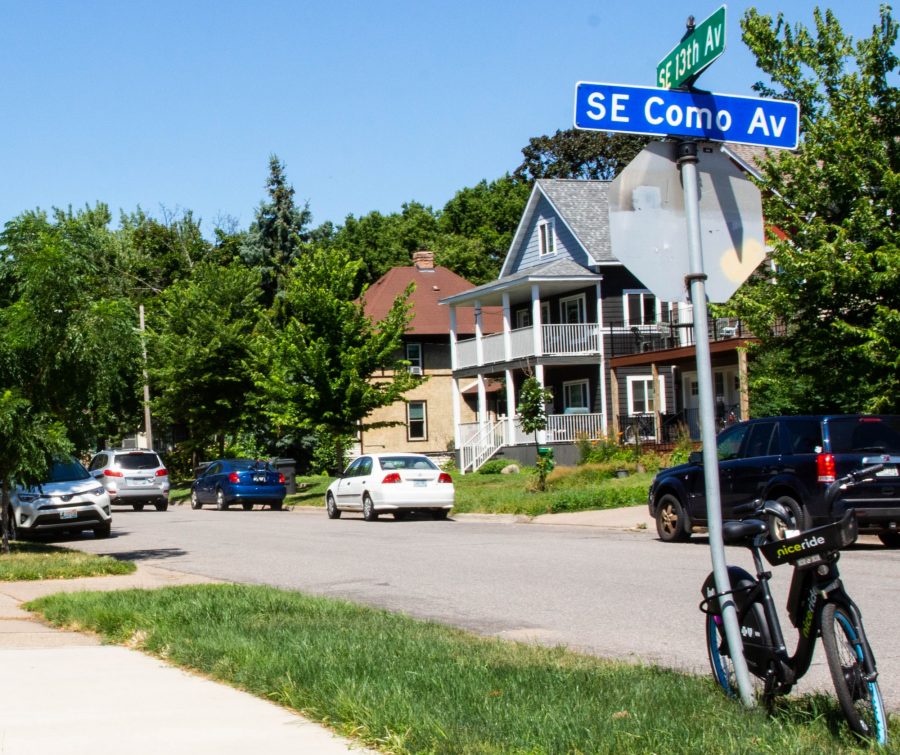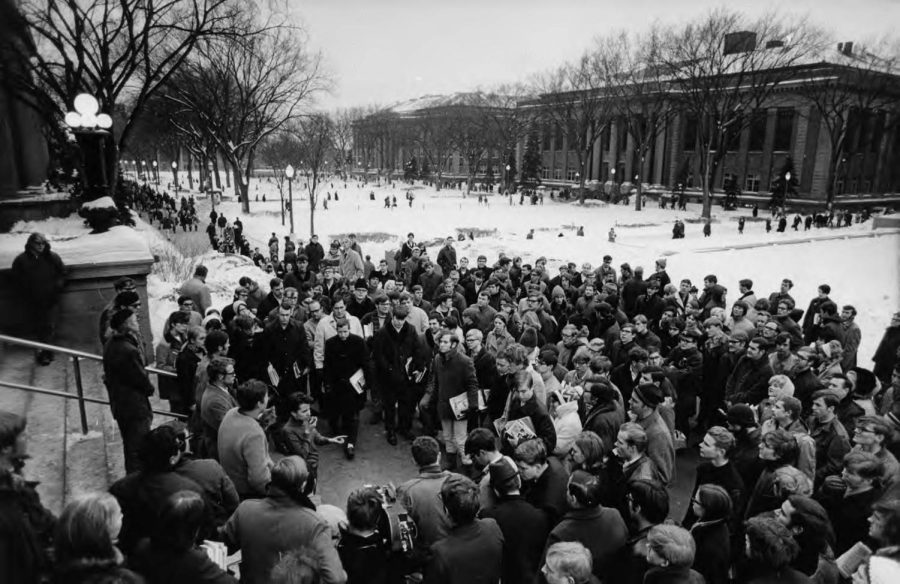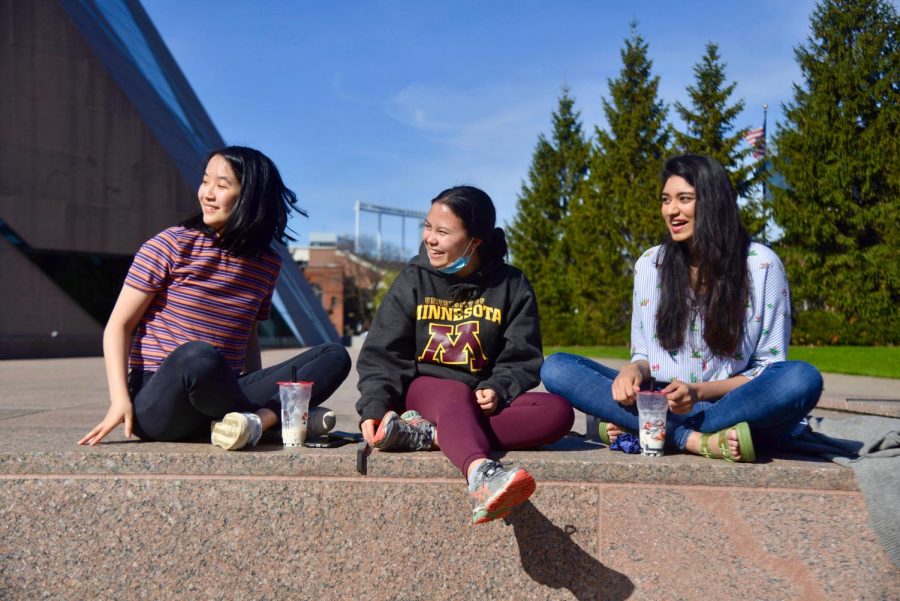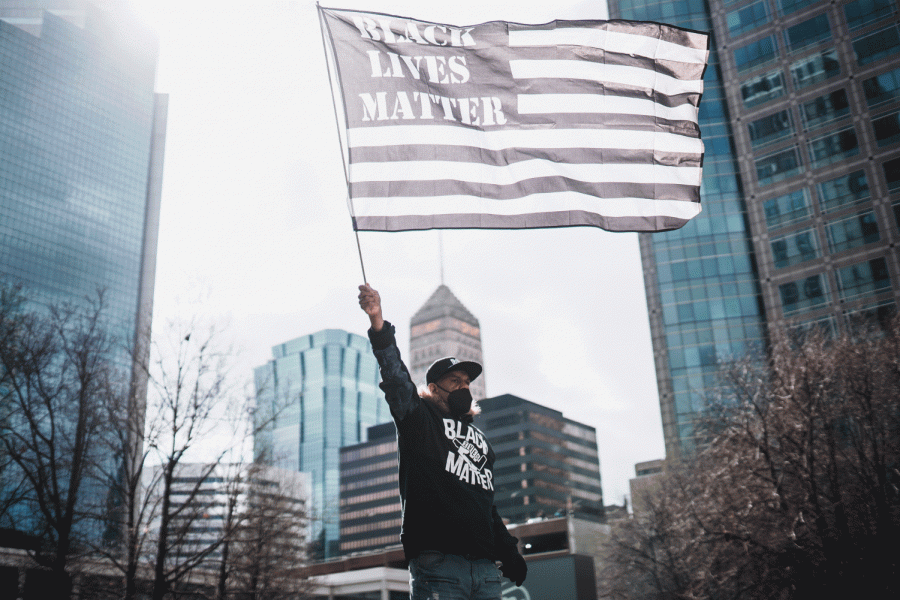Southeast Como resident Georgia Smith has lived on 13th Avenue Southeast since 1947. But the neighborhood she has known her entire life has changed dramatically.
Now, Smith, 72, remains one of four homeowners still living in their primary residences on her street — out of 26 properties spanning one block.
The University of Minnesota neighborhood of Southeast Como has seen a steady decline in homes owned by residents over recent decades, leading to a proliferation of rental properties. While this shift is happening citywide, it is not taking place evenly — and University-area neighborhoods are likely seeing this play out more substantially due to a constant flow of student renters.
Southeast Como resident Larry Crawford said a community can become “lifeless” when it shifts away from local ownership and the housing stock is gobbled up by companies. Crawford said many developers and speculators are not engaged in the community and aim to exploit students for the sake of profit.
He worries his neighborhood could become something like Stadium Village.
“A vibrant neighborhood needs a diverse mix of residents, by age, work status, income, ethnicity, and so on,” Crawford said in an email to the Minnesota Daily. “A ‘monoculture’ of 60%, 80%, or more of renters is not a vibrant, livable community.”
But Crawford also said University district homeowners welcome students, as many of them came to the area as students and realize rental housing is necessary for a good community.
According to 2018 data by the U.S. Census Bureau, the census group of Southeast Como and the adjacent Mid-City Industrial neighborhood show 20% of properties being owner-occupied. In 1990, about 38% of homes were owner-occupied.
Owner occupancy has effectively been cut in half in three decades.
Even more recently, multiple highly dense developments and new duplexes and triplexes have been proposed this year to replace single-family homes like Smith’s.
“In my lifetime, it’s changed quite a bit,” Smith said. “It does change the neighborhood … from being kind of a community-type to who knows who’s gonna move in next.”
An area ripe for profit
Smith receives letters from real estate investors asking to buy her property on a weekly basis. And she is not alone.
The University district has been a prime spot for real estate investment and development likely due to the captive student market, said housing expert Ed Goetz, executive director of the University’s Center for Urban and Regional Affairs (CURA). Low-income neighborhoods have also been targets for development in the city, he said. According to census data, Southeast Como is also considered a low-income neighborhood.
Goetz said the dynamics around the University can be different than those in other low-income areas, “but the outcome is the same … more single-family homes being shifted to rental.”
Smith’s single-family home, where she lives with her husband, is no longer the norm.
Between 2003 and 2018, rentals for small residential properties — buildings with one-to-three units — have almost doubled to 65% in the Southeast Como and Mid-City Industrial neighborhoods, according to data compiled for an ongoing study by CURA. By 2018, almost a third of all those parcels were owned by an LLC or corporation, which is five times higher than the city as a whole.
Smith is now mostly surrounded by renter-occupied multi-family homes, and developer interest has not slowed.
Southeast Como-based GoGopher Rentals owns multiple properties along 13th Avenue Southeast. The developer has proposed and built at least three housing structures throughout the neighborhood just this year, amounting to more than 65 bedrooms.
Earlier this year, one high-profile proposal would have replaced the historic Como Congregational Church a block away from Smith’s home. Northland Real Estate Group proposed a 39-bedroom project for the parcel. Almost every unit included five bedrooms, which neighbors said was more like a “rooming house” than apartments.
The project ultimately died, but a low unit count with many bedrooms has been an ongoing occurrence in the University area. For all other areas of the city, this is not usual, Goetz said.
Crawford, who has lived in the area for many years, said only developers working in the University area could get away with offering a small space for a high price.
“There’s this sense that the neighborhood is gradually changing and could be on a trajectory to be almost 100% rentals,“ said Ward 2 City Council member Cam Gordon, who represents the area.
When a house is not a home
Absentee owners — property owners who do not live in the community where the property is located — also have a substantial presence in Southeast Como. On 13th Avenue Southeast, some property owners are based in other areas in Minneapolis, some in other parts of the state and one in Seattle.
“People we didn’t know were starting to buy the duplexes up,” Smith said. “We never hardly saw them … We just saw students.”
Goetz said the “financialization of housing” may explain the absentee-owner presence. Housing can become a tool for profit — from any investor anywhere that is able to afford it — shifting the notion of housing as being a commodity rather than a home. Absentee-owned properties tend to be priced higher too, Goetz said.
“This is a source of income for them,” he said.
When it comes to sustaining a community, absentee-ownership — and a larger rental market — also poses other challenges. These property owners are usually less engaged with the long-term stakes of positive neighborhood vitality and maintaining upkeep of the property, Crawford said.
But “renters can be great neighbors too,” Gordon said. And not all property owners in Southeast Como are absentee owners.
Southeast Como Improvement Association (SECIA) president Karl Smith said some renters do participate in the community, such as in environmental work and involvement at SECIA.
The lack of homes for purchase in the area also poses a barrier for everyday people, like recent grads, to buy property.
“When you shut a whole bunch of people out of being able to build equity like that, it’s just unfair,” he said.
To combat this, the neighborhood has created a loan program for homebuyers. The City of Lakes Community Land Trust has also acquired properties in the area as a bulwark against speculative for-profit real estate purchases.
Even still, Georgia Smith said she worries that as her fellow owner-occupant neighbors decide to move out, a new duplex or triplex will soon be put up on the other side of her home.
Despite the changing landscape around her, Smith said she would not want to sell to anyone.
“It’s been my block since I was a baby,” she said.













